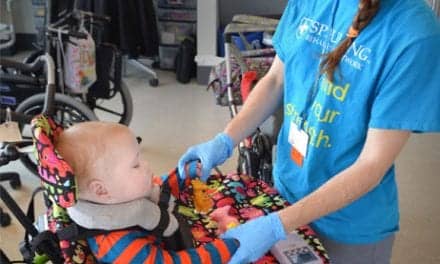In a recent study, researchers performing genetic testing on children with cerebral palsy note that there could be a stronger genetic cause for the condition than previously thought.
The study was published online August 3 in the journal Nature Communications, according to a news release from McGill University Health Centre.
Per the release, the research team from The Hospital for Sick Children (SickKids) and the Research Institute of the McGill University Health Centre (RI-MUHC) in Canada performed genetic testing on 115 children with cerebral palsy and their parents from the Canadian Cerebral Palsy Registry, many of which had other identified risk factors.
They found that 10% of these children have copy number variations (CNVs) affecting genes deemed clinically relevant. In the general population, such CNVs are found in less than 1% of people. CNVs are structural alterations to the DNA of a genome that can be present as deletions, additions, or as reorganized parts of the gene that can result in disease, the release continues.
“How these genetic factors interplay with other established risk factors remains to be fully understood,” says lead study author Maryam Oskoui, MD, pediatric neurologist at The Montreal Children’s Hospital (MCH) of the MUHC, co-director of the Canadian Cerebral Palsy Registry and an Assistant Professor in the Department of Paediatrics and Department of Neurology and Neurosurgery at McGill University, in the release.
“For example, two newborns exposed to the same environmental stressors will often have very different outcomes. Our research suggests that our genes impart resilience, or conversely a susceptibility to injury,” she continues in the release.
Stephen Scherer, PhD, FRSC, principal investigator of the study and director of The Centre for Applied Genomics (TCAG) at SickKids, notes in the release that in light of the findings, genomic analyses should be integrated into the standard of practice for diagnostic assessment of cerebral palsy.
Per the release, the study also demonstrates that there are many different genes involved in cerebral palsy.
“It’s a lot like autism, in that many different CNVs affecting different genes are involved, which could possibly explain why the clinical presentations of both these conditions are so diverse,” says Scherer, who is also director of the University of Toronto McLaughlin Centre, in the release.
“Interestingly, the frequency of de novo, or new, CNVs identified in these patients with cerebral palsy is even more significant than some of the major CNV autism research from the last 10 years. We’ve opened many doors for new research into cerebral palsy,” Scherer states in the release.
[Source(s): McGill University Health Centre, EurekAlert]





